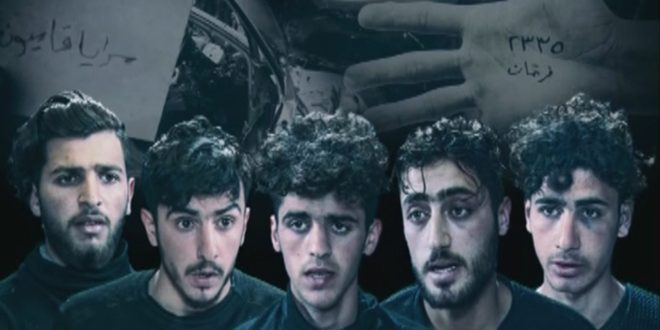The Syrian security forces have arrested the perpetrators of the recent terrorist attacks that targeted several cars and military targets in and around the capital Damascus.
In their confessions broadcast by the Syrian TV on Saturday evening, the six terrorists, including a woman, confessed to carrying out terrorist explosions with explosive devices targeting cars in the streets of Damascus and its countryside in exchange for sums of money from their operators who were encouraging them to be agents and implementers of the plans of the enemies of Syria and its people.
The terrorists are: Issa Iyad Abbas, Mahmoud Mohamed al-Khateeb, Hamza Ahmad al-Masri and Hussam al-Halak. All the terrorists, whose ages range from 18 to 20 years, were born in the city of Kanaker, south of Damascus, while Ali Ahmad al-Atrash, 22 years, is from Mu’adamiyat al-Sham.The terrorist Fatmeh Bakash, from Darayya, south of Damascus, lived in the city of Jasem in the southern province of Daraa.
They admitted that their operator is a person named Abu Ashur, a known terrorist in the countryside of Quneitra and Damascus and was the head of the engineering department of the so-called Liwa al-Furqan terrorist organization, whose leader is the terrorist Mohammed Majed al-Khatib. Khatib is currently in Jordan and works in the MOC operations room which includes, British, American, Israeli and Saudi officers, where operations for the southern region of Syria have been planned since the beginning of the war in 2011.
Recruited terrorists said that their young age facilitated their passage through military checkpoints without review, but sometimes they had to get off the bus before the checkpoint and walk on foot to prevent explosive detection devices from discovering the bombs that were carried in black bags.
At the beginning of their missions, they put four kilograms of C4 explosives in military checkpoints, and then they were asked to repeatedly place small bombs equipped with magnets and activated when the vehicle’s engine was turned on.
They indicated that before placing the bombs they took photos of the vehicles and sent them to Abu Ashur by Telegram or Whatsapp to get the green light, and they also had to film the explosion.
They admitted to being the authors of all the attacks that took place in Mezzah, Sabee Bahrat, Baramkeh, al-Zahera, al-Midan in Damascus, and in the city of Qatana south of Damascus.
The terrorists clarified that on three occasions the bombs they placed did not detonate and the next day they had to check the bombs and reactivate or replace them.
Their last attempt, according to their confessions, was to plant a bomb in the car of an army officer in Qatana town, but the device did not explode.
The terrorists received 20,000 to 25,000 Syrian pounds for each bomb placed, in addition to promises to leave the country for Germany.
This article was edited by The Syrian Observer. The Syrian Observer has not verified the content of this story. Responsibility for the information and views set out in this article lies entirely with the author.


